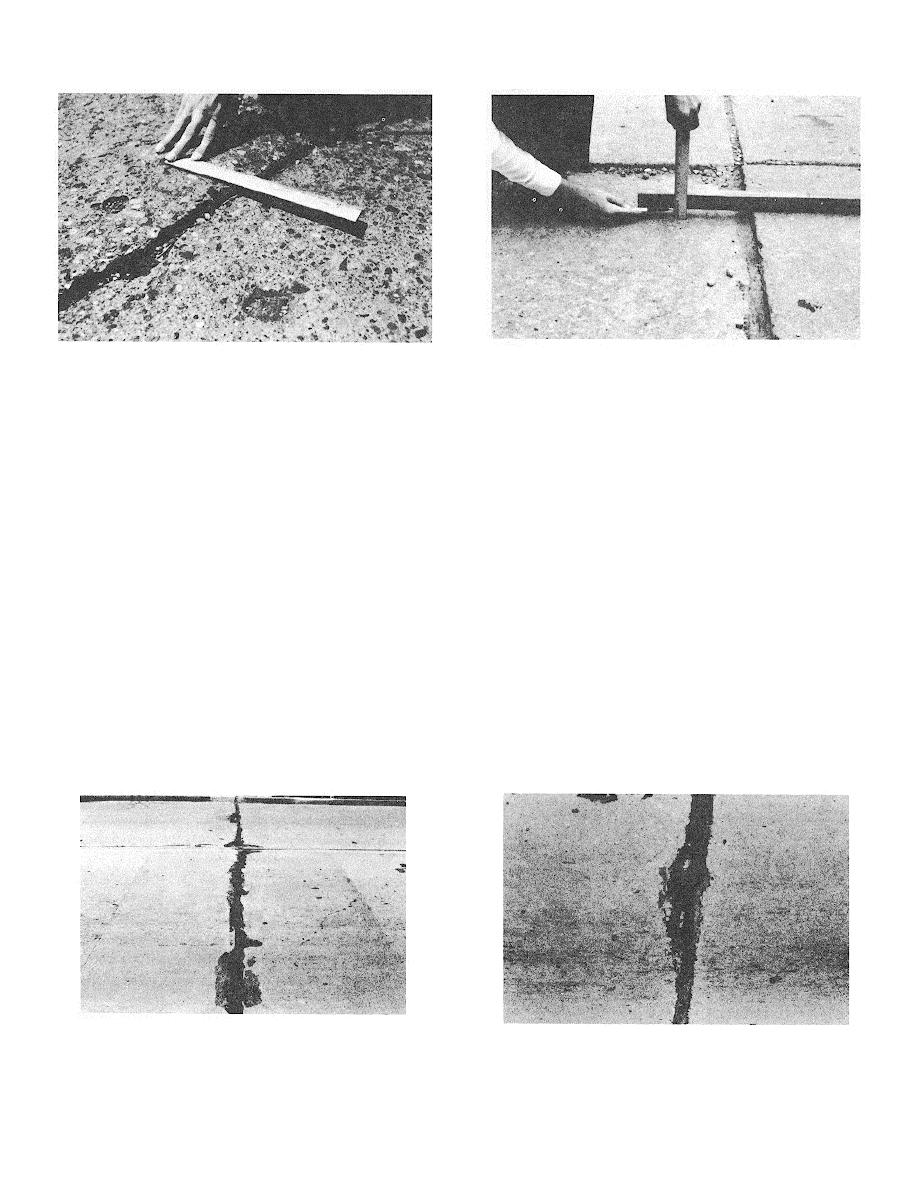
TM 5-623
Figure B-92. Medium-severity faulting.
Figure B-93. High-severity faulting.
How to Count:
Faulting across a joint is counted as one slab. Only affected slabs are counted.
Faults across a crack are not counted as distress, but are considered when
defining crack severity.
Name of Distress:
Joint Seal Damage.
Description:
Joint seal damage is any condition which enables soil or rocks to accumulate in
the joints or allows significant water infiltration.
Accumulation of
incompressible materials prevents the slabs from expanding and may result
in buckling, shattering, or spalling. A pliable joint filler bonded to the edges of
the slabs protects the joints from material accumulation and prevents water
from seeping down and softening the foundation supporting the slab.
Typical types of joint seal damage are:
1. Stripping of joint sealant.
2. Extrusion of joint sealant.
3. Weed growth.
4. Hardening of the filler (oxidation).
5. Loss of bond to the slab edges.
6. Lack or absence of sealant in the joint.
Severity Levels:
L-Joint sealant is in generally good condition throughout the section. Sealant is
performing well, with only minor damage (see above) (fig B-94).
M-Joint sealant is in generally fair condition over the entire section, with one more
of the above types of damage occurring to a moderate degree. Sealant
needs replacement within 2 years (fig B-95).
Figure B-94. Low-severity joint seal damage.
Figure B-95. Medium-severity joint seal damage.
B-31


 Previous Page
Previous Page
